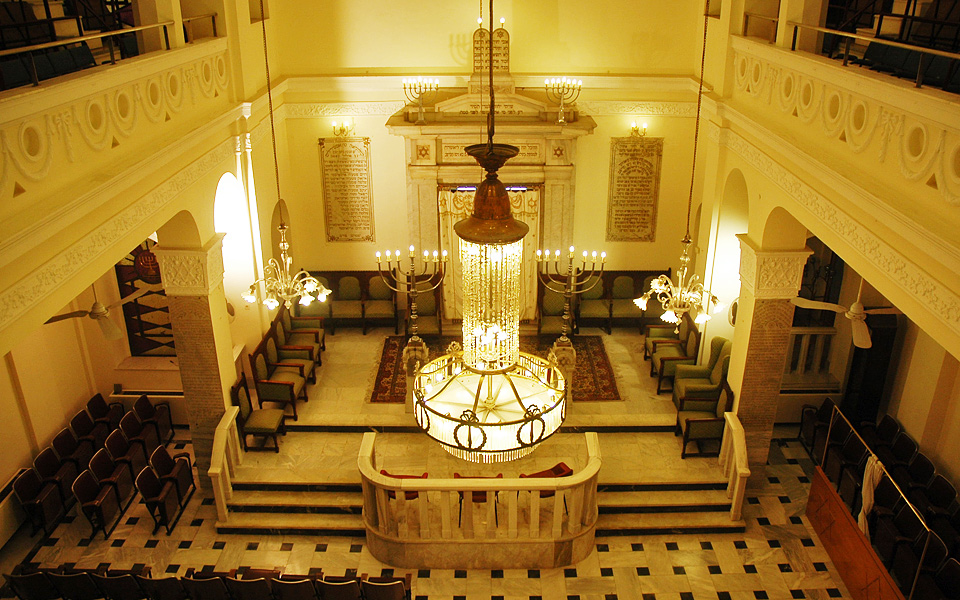Old mansions belonging to prominent Jewish families, synagogues, shopping galleries, banks and other buildings that survived the Nazi German occupation, various demolitions carried out over the years, as well as the wear of time, stand to highlight the robust presence of Thessaloniki’s Jewish community, 96 percent of which perished as a result of the Holocaust. Though most surviving buildings are nowadays used for different purposes, they remain loaded with memories of the past. Hristos Zafiris, a journalist and writer who prepared “Thessaloniki of the Jews”, a Greek-language history and travel guide book featuring maps and photographs – soon to be also published in English and French – takes us on a tour of these buildings, as well as monuments established in recent decades to commemorate locations where Greek Jews fell victim to Nazi forces during World War II.
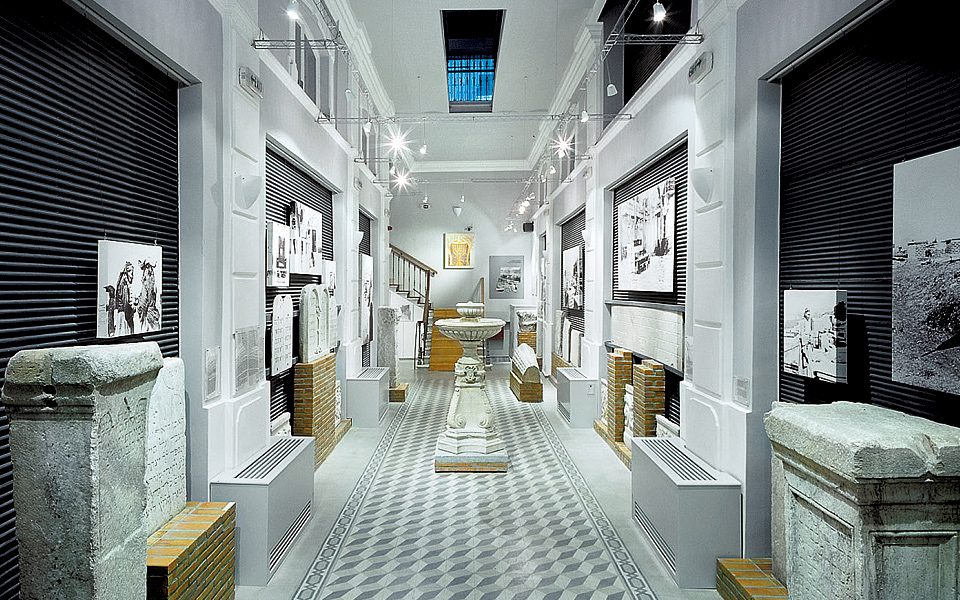
© Jewish Museum of Thessaloniki helps the public learn about the city's Jewish heritage
1 | Jewish Museum of Thessaloniki Representing the historic center of Thessaloniki’s Jewish community, this museum serves to acquaint the public with the city’s Jewish historic and cultural heritage. Founded in 2001, it is housed amid a listed building dating back to 1906. In the early 20th century, it housed the Bank of Athens and the French-language Jewish newspaper “L’ Intependant”. The museum’s permanent exhibition features headstones from the old Jewish cemetery destroyed by the Nazis during the Greek Occupation, family and religious heirlooms, as well as old Jewish newspapers and costumes. The Holocaust Room, an emotionally charged space, includes items from the Nazi crematoriums, yellow stars worn by Jews in the ghettos, and the authentic metal press used to make these.
INFO: 13 Agiou Mina St., Tel: +302310.250.406 Mon- Fri: 10:00-15:00, Wed: 10:00-15:00 and 17:00-20:00, Sun: 10:00-14:00, Sat: closed, http://www.jmth.gr/
2 | Monastirioton Synagogue The official Thessaloniki synagogue, it is the city’s only synagogue that remains in its pre-Holocaust state. Unlike all of the city’s other old synagogues, the Monastirioton synagogue was not destroyed by Nazi German forces during the occupation of Greece as it was used as a warehouse by the Red Cross. It was built between 1925 and 1927, served as a religious center for Jewish refugees arriving from the city Monastiri – nowadays located in the Former Yugoslav Republic of Macedonia (FYROM) and named Bitola – and was used as a ghetto center by Nazis forces in the densely populated Jewish Syggrou area before the eventual displacement of Jews in 1943.
INFO: 35 Syggrou St, Tel.: +302310.275.701, Mon- Fri: 10:00-15:00, Wed: 10:00-15:00 and 17:00-20:00, Sun: 10:00-14:00, Sat: closed, http://www.jmth.gr/ www.jct.gr/synag_monastir.php
“The museum’s permanent exhibition features headstones from the old Jewish cemetery destroyed by the Nazis during the Greek Occupation, family and religious heirlooms.”
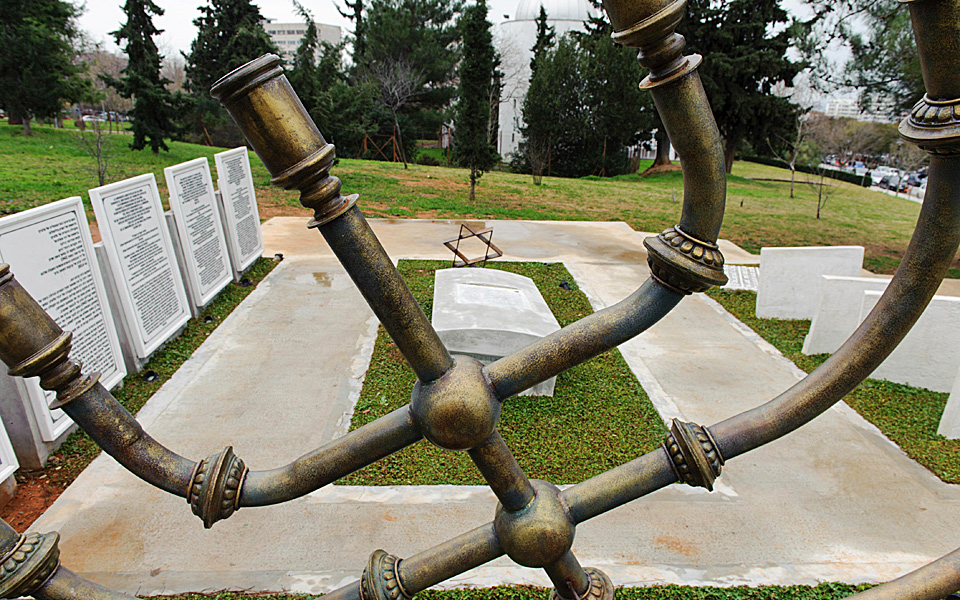
© Aris Papadopoulos
3 | Jewish Holocaust Memorial The Jewish Holocaust Memorial, established in remembrance of the 50,000 Greek Jews exterminated at Nazi concentration camps is located at the southeastern corner of Eleftheria (Freedom) Square, nowadays transformed into a parking facility. Nazi forces had rounded up Jewish men here on July 11, 1942 for processing procedures prior to their deportation to concentration camps. The captives were tortured in broad daylight. The memorial’s monument, a bronze sculpture of a seven-branched menorah, a Jewish symbol, whose flames are wrapped around human bodies in demise, was created by Nandor Glid, a Serbian Professor of Applied Arts in Belgrade, and his son. It was unveiled in 1997 and, since 2006, has stood at the parking space opposite the port at the beginning of Nikis Avenue. The Thessaloniki Municipality plans to revamp the square to further highlight its association with the city’s Jewish heritage.
INFO: Eleftherias Square, Nikis Ave. & El. Venizelou St.
4 | Old Railway Station The last act in the Jewish tragedy of Thessaloniki took place between March 15 and August 2, 1943, at the city’s Old Railway Station, where Jews were stacked into livestock carriages and sent off to the extermination camps at Auschwitz-Birkenau and Bergen-Belsen. Since 1951, the Old Railway Station has been used to transport goods. An old railway administrative building, built in 1871, featuring a monument with historic details on the Baron Hirsch Jewish district, established in 1892 to house Jews displaced by a fire, may be seen here.
INFO: Stathmou Str. (new west entrance)
5 | Casa Bianca One of the city’s most renowned mansions, Casa Bianca has housed the Municipal Gallery since 2013. Built in 1912 by Italian architect Pierro Arrigoni, it was owned by Dino Fernandez Diaz, a Jewish entrepreneur of Spanish heritage, and named after his wife. This building is not only famous for its unique architectural style, featuring Renaissance and Art Nouveau elements, but also because it is the location where a romance developed between Alini, the owner’s daughter, and Spyros Alibertis, a Greek army second lieutenant. The couple discarded the era’s social and religious taboos, married and survived the Holocaust. The mansion was sold in 1965, housed a kindergarten and school in the ensuing years, and, following a strong earthquake in 1978, was expropriated by the Greek State and restored to its original form in an exemplary fashion.
INFO: 180 Vas. Olgas Ave. & Them. Sofouli St, Τel.: +302310.427.555, Wed.- Fri.: 10:00–17:00, Sat.: 11:00- 15:00.
“One of the city’s most renowned mansions, Casa Bianca has housed the Municipal Gallery since 2013.”
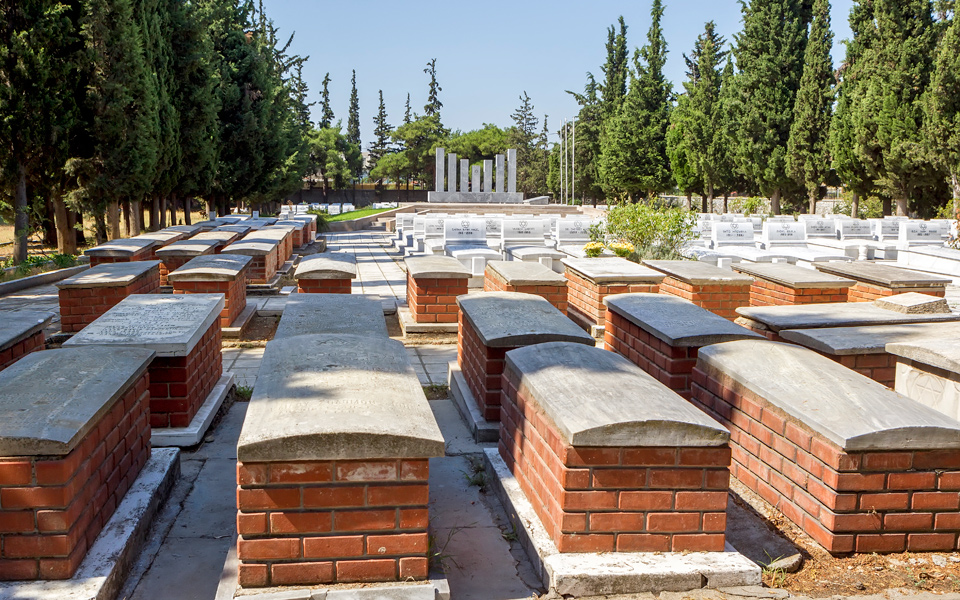
© shutterstock.com
6 | Old Jewish Cemetery Memorial The oldest Jewish necropolis in the Mediterranean, it existed from the early Roman era at an expanse nowadays belonging to the Aristotle University of Thessaloniki. It included over 300,000 tombs but few gravestones survived the Nazi assault of 1942. In 2014, as remembrance of the destroyed Jewish cemetery, the Aristotle University of Thessaloniki and the Jewish community erected a simple monument in the form of a bronze sculpture of a seven-branched menorah, as well as a composition comprised of marble plaques from the desecrated tombs. The memorial was created by architect Konstantinos Lentaris.
INFO: University Campus (Panepistimioupoli), Observatory (Asteroskopio) Park (central gate entrance).
7 | Malakopis Gallery The old La Banque de Salonique (Bank of Thessaloniki) building, at Hrimatistiriou Square, nowadays operates as a shopping gallery named Stoa Malakopis. The building was constructed in 1907 and designed by renowned architect Vitaliano Poselli, while the bank was founded by the Italian-Jewish Allatini entrepreneurial family. The clock at the top of the building’s façade is stuck at 11:07, signaling the time when a major earthquake struck Thessaloniki on June 20, 1978, devastating many buildings and leaving 45 dead.
INFO: Malakopis Gallery, 7 Syggrou St.
8 | Saul Gallery The Saul Gallery serves to remind of the robust entrepreneurship practiced by the Jews in Thessaloniki. It was built by Jewish banker Saul Modiano between 1867 and 1881, possibly to architectural plans by Vitaliano Poselli. It stood as a two-level building of simple Renaissance design and featured roughly 100 shops, workshops and offices. Part of the structure was torched by a fire that broke out in the area in 1917 and rebuilt in 1929, as an L-shaped structure. The arcade is still used for commercial purposes today, hosting cafes and a number of small shops.
INFO: Ermou & 15 El. Venizelou St & 15 Vas. Irakleiou St.
“The main building at the Ippokrateio, Thessaloniki’s biggest and most modern hospital today, was built between 1905 and 1908, based on plans by the architect Pierro Arrigoni.”
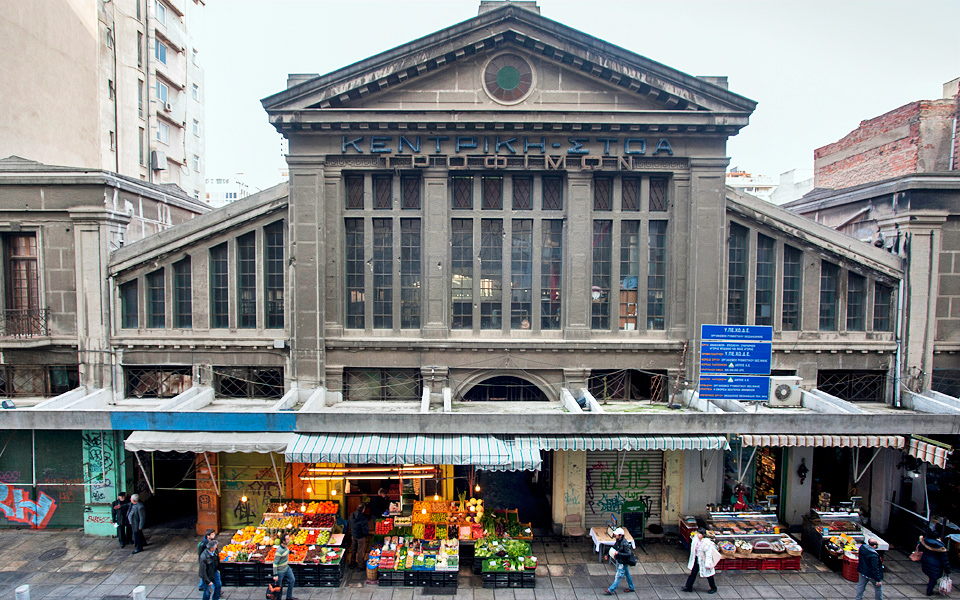
© Alexandros Avramidis
9 | Hirsch Hospital The main building at the Ippokrateio, Thessaloniki’s biggest and most modern hospital today, was built between 1905 and 1908, based on plans by the architect Pierro Arrigoni. Originally serving as a hospital for the city’s Jewish community, it was developed courtesy of a donation by the baroness Clara de Hirsch, the wife of Austrian-Jewish philanthropist Maurice de Hirsch, who developed the Balkan region’s railways. The two-level hospital, which was equipped with 98 beds, was initially known as the Hirsch Hospital. During the ensuing war periods, it was used as a military hospital by the French and British allies. Between 1944 and 1950 it covered the medical needs of British military bases. In 1950, the Jewish Community transferred the hospital’s ownership to the Greek State. The old building nowadays houses the modern-day hospital’s administration. A wall script in Hebrew, listing the names of the hospital’s first board members, may be seen in the B Pathology unit corridor.
INFO: Ippokrateio Hospital, 49 Konstantinoupoleos St.
10 | Modiano Market Thessaloniki’s largest sheltered market was built in 1922, based on designs by Jewish architect Eli Modiano, over the ashes of Kadi, a Jewish district. It was launched in 1925 as a central food market. This rectangular-shaped building, featuring a glass roof and divided into four galleries, nowadays is home to many charming little tavernas and food shops. Expect to find exquisite food choices here.

